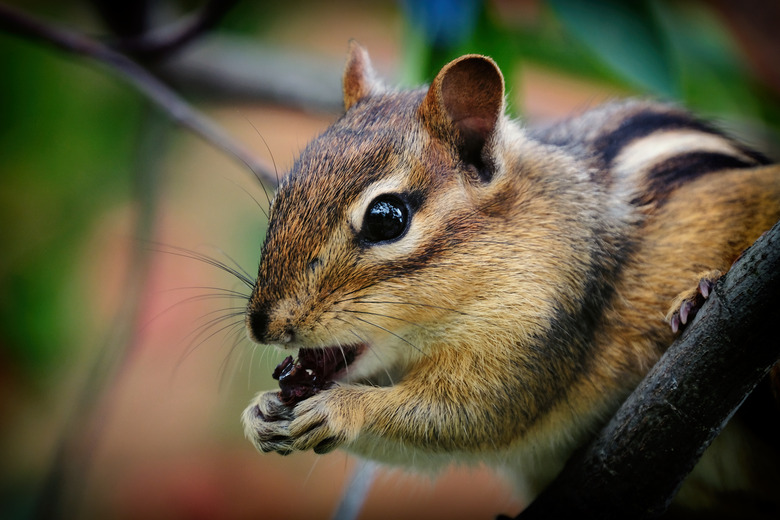Can Chipmunks Damage My House?
We may receive a commission on purchases made from links.
Chipmunks are adorable and fun to watch, but do they present a risk to your house? The answer is probably not. The damage caused by chipmunks is usually limited to the garden, where these hungry critters will munch on your plants. They have little interest in your home. It's technically possible, however, that a large chipmunk burrow could erode the earth under your home's foundation and cause an issue, but this is unlikely.
Tip
Burrowing chipmunks can weaken foundations on homes and outbuildings, but it's highly unlikely.
The Potential Problem
The Potential Problem
Because chipmunks build extensive underground burrows, homeowners are often concerned that their digging will erode the earth around their home's foundation, sidewalks, driveway, retaining walls, and other structures. Although this isn't completely outside the realm of possibility, it happens much less frequently than pest control companies want homeowners to believe.
The amount of digging required to undermine these structures would necessitate an entire little chipmunk army, and usually, only two to four chipmunks live on an acre of land. You may see more dense populations, however, if the conditions are right. Chipmunks do sometimes reuse old burrows and add on to them, as well.
Guard Your Garden
Guard Your Garden
Because chipmunks aren't likely to damage your house, many homeowners take a live-and-let-live approach when they see them. If you take this approach, you'll need to take steps to prevent damage to your flower beds. Chipmunks will leave your house be, but they'll shamelessly wreak havoc on your garden with no remorse.
To prevent them from digging up bulbs and seeds in your garden, plant them beneath a mesh of 1/4 inch hardware cloth. Plant the seeds, cover them with the cloth, and then cover the cloth with soil. Make sure the hardware cloth extends at least 1 foot beyond your planting area in all directions. If you don't, tenacious chipmunks will simply dig around the cloth when they can't get through it.
Discouraging Chipmunk Tenants
Discouraging Chipmunk Tenants
Chipmunks damaging homes is rare, but weird stuff can happen. If you're concerned about their burrowing and would rather they not come visit your property, there are many humane ways to discourage them. The first is to move bird feeders away from your home or property as the seed will attract them. So will other food sources. Rock piles, stacks of wood, and similar items in your yard provide cover as well as tasty insects and mushrooms for chipmunks, so remove them or move them away from your home and other structures.
When possible and practical, landscape with rocks or gravel rather than tasty ornamental plants. Keep your grass cut short to provide minimal coverage from overhead predators. You'll also want to caulk any holes or cracks around your foundation and, if desired, surround the exterior of your home with hardware cloth to prevent chipmunks from digging beneath it. Extend the mesh under the soil for several inches, creating an L-shape for best results. Both you and the chipmunks will be happier if they don't accidentally find a way to enter your home.
In some areas, it's legal to capture chipmunks in humane traps and relocate them. Check the ordinances in your area before doing so, however. Some areas may not allow trapping, and others likely have strict rules about where and when you can release wild animals As always, if you do opt to trap an animal, it's imperative that you check the trap often so the captured animal doesn't starve, dehydrate, or otherwise suffer in the trap.
